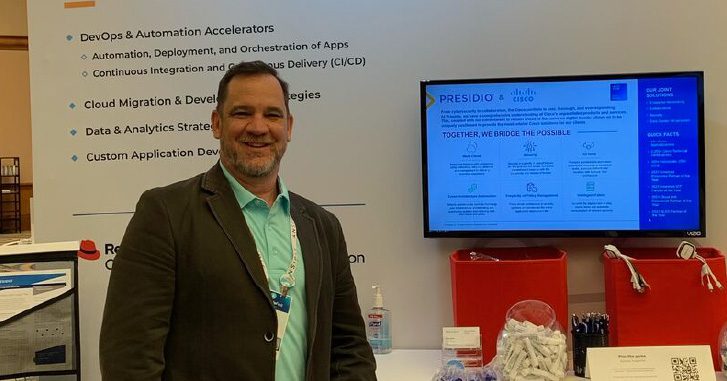

Many companies now have to balance the needs of in-person and remote workers. There’s a growing amount of communication channels for workers, but it’s still challenging to find one that suits the needs of everyone.
In this episode, Casey Klein, Vice President, Contact Center at Presidio, and Bill Fix, Collaboration Practice Director at Presidio, share how they’ve personally connected with their employees to craft an efficient and responsive workflow.
Join us as we discuss
- Combining data and emotional intelligence
- Interpolating information in remote workspaces
- Prioritizing collaboration as a foundation for success
When emotional intelligence and data collide
Over the past eight years, collaboration has been on a path of accelerated evolution. While a decade ago, people of various roles collaborated by meeting in an office or dialing into a phone meeting, times have changed.
Like collaboration, the capacity in which people work has also shifted. With a swift and fixed shift from in-office work to remote, many employees and employers experienced a new way to complete work. As offices have re-opened, many have chosen to remain remote or incorporate a hybrid approach. By changing how people work, the modern workforce has also shifted in how they collaborate with one another and with consumers.
Today is driven by an experience economy. Consumers want their questions answered, problems solved, and a great experience during these processes.
Adapting communication methods to meet the needs of clients and employees has helped provide this experience.
“Collaboration-application has become a focal point for our clients’ workday, and the cornerstone of the user experience.” — Bill Fix
In previous years, phone calls have been the preferred method of collaboration outside of in-person meetings. However, post-pandemic video conferencing has become the new voice.
A vast majority of people under the age of about 55 prefer to collaborate via video.
Regardless of the mode in which people are offered collaboration, it is essential to ensure that users, consumers, or clients can have a collaborative method that meets their needs. Therefore, an organization should assess who they serve and how they prefer to communicate before building their experience.
Achieving a personalized experience with modern technology
Finding and offering the client’s preferred mode of communication is the first step in creating a customized experience. However, the journey to a complete custom positive customer experience is more complicated than offering phone, email, and chat support.
“If you want a personalized experience, you need to use analytics and AI to generate proactive engagement. Don’t wait for someone to contact you; reach out to them.” — Casey Klein
Consumers have high expectations for human connection when they reach out. By utilizing modern technology to assess their current level of engagement, needs, and expectations, organizations can create an experience that is second to none.
Customer data platforms allow users to pull a complete profile of a customer or employee, orchestrate all information and previous interactions into a singular data set, and proactively approach the individual armed with the necessary information.
Customers must feel as if they are known when they contact an organization. For the best personalized experience, employees must offer a connection with each customer that feels genuine.
This personal connection requires a combination of a developed emotional intelligence and properly utilized modern technology and data analysis.
Full circle to collaboration, regardless of the setting
In addition to a tremendous customer-employee connection, exemplary experience is built upon the cooperation of systems.
Business leaders should build the foundation of an organization or service upon collaboration systems. Consumers should be able to easily and quickly connect with knowledgeable employees and be helped in a personalized, empathetic manner, and systems should easily connect and communicate.
However, ensuring these collaboration systems are built to support employees is crucial.
“People who can handle collaboration on a fundamental level have an advantage. Let’s get the underlying infrastructure and architecture platform in place, and then let’s build on it with the business.” — Casey Klein
As many return to in-office settings, and more shift to a hybrid workforce, people expect the same work quality across the board. Capitalizing on flexibility and autonomy, many organizations are seeing higher productivity levels as employees can shift between settings.
Ensuring the employees experience high levels of collaboration and cohesion between modes of work helps to create an organizational ecosystem that serves each stakeholder from the ground up. In addition, because collaboration affects the efficiency and satisfaction of everyone involved in an organization, leaders can use it to help assess organizational success.
Businesses must stop analyzing communication systems based on how many features each has and how complete the system appears. Instead, the collaboration on each level of an organization should be used as a measurement of competitiveness and forward movement.
To hear more interviews like this one, subscribe to The Digital Decode Podcast on Apple Podcasts, Spotify, or your preferred podcast platform.
































































































































































































